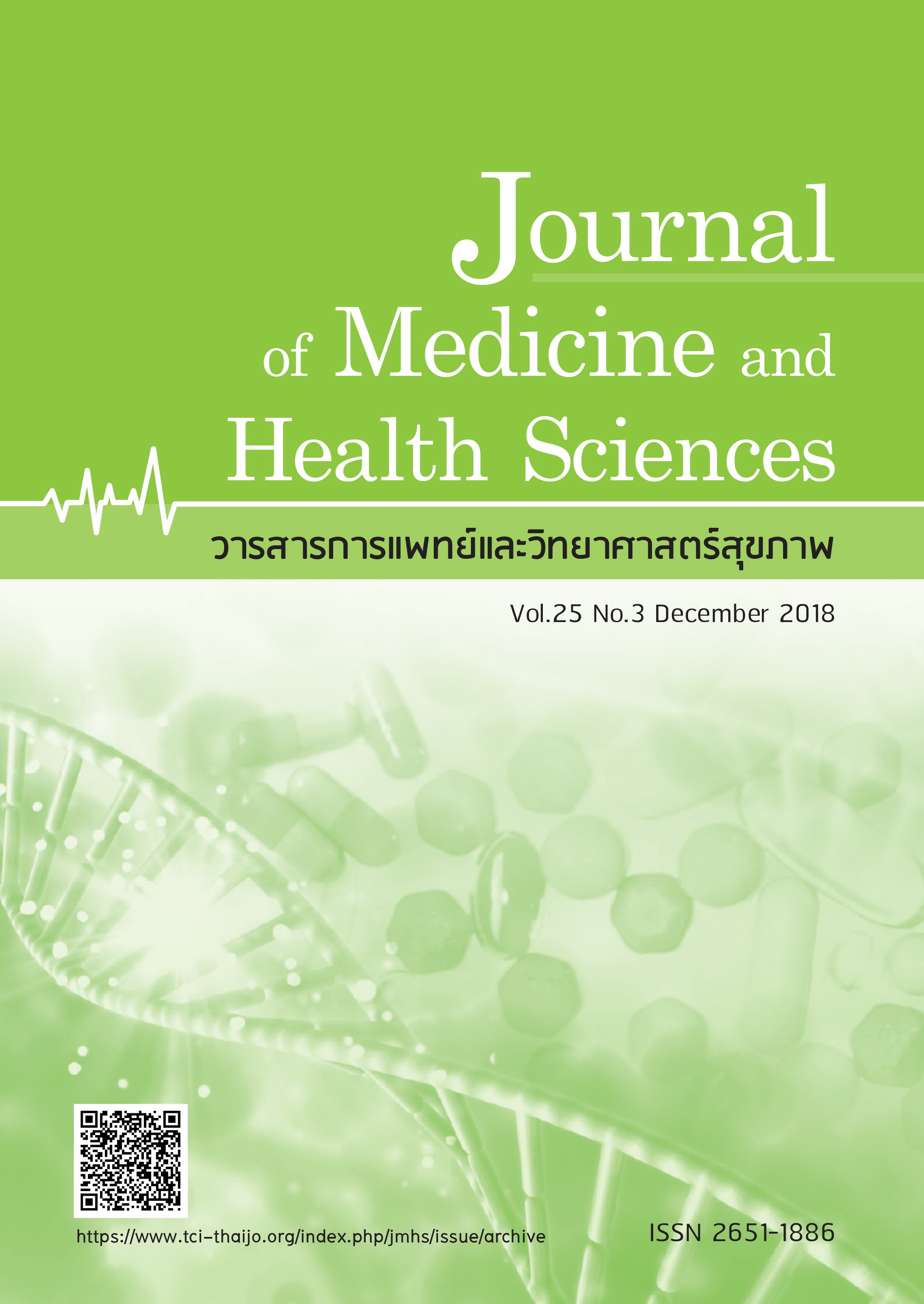Outcome of acupuncture service in Naresuan University Hospital
Keywords:
alternative medicine, acupuncture, satisfaction assessmentAbstract
Acupuncture is an alternative medicine which needs to evaluate its effectiveness.
This research aimed to assess the outcome of the acupuncture services for the first time. One
research method was the survey of patients by interviewer for 5 areas including 1. Satisfaction
2. Outcomes of treatment 3. The motivation for choosing acupuncture services. 4. Public
Information about acupuncture services 5. Suggestion of services. Most patients were female and
their ages rang between 50 and 59 years old. Most they were unemployed. The most common
health problems were knee pain. Most of them had never had been acupuncture experience
and they got the information upon the recommendations from non-hospital personnels.
The patients needed to use acupuncture combined with conventional treatments. They
hope their condition would improve after the first time, but were also willing to continue
acupuncture if the results proved to be better. 80.5% of patients experienced improve
condition after the first treatment with no obvious side effects. They had only symptoms of
fatigue after acupuncture and 97.2% of patients also decided to continue the treatment. In
summary, the patients had satisfaction in the results of treatment and environment during
their treatment. However, the patients need the hospital to improve public information
on acupuncture services, increase the appointment channels and increase the number
of acupuncture physicians. Additionally 88.9% of patients were willing to pay for health
promotion training. The most popular training programs were Integrative Medicine Practice for
a balance of life and Meditation Practice Training.



